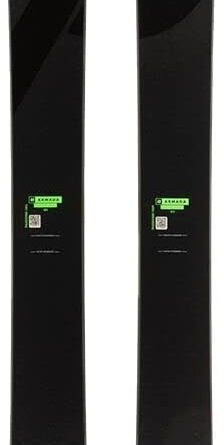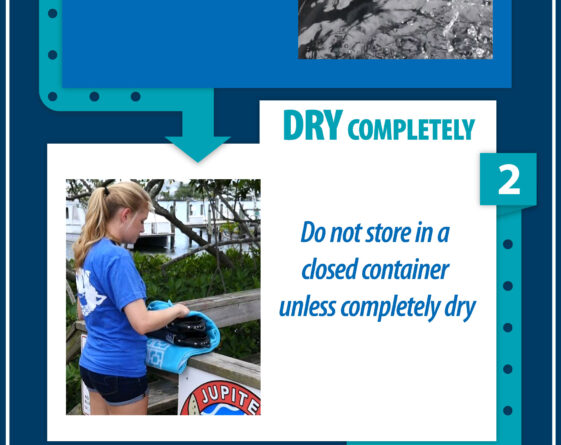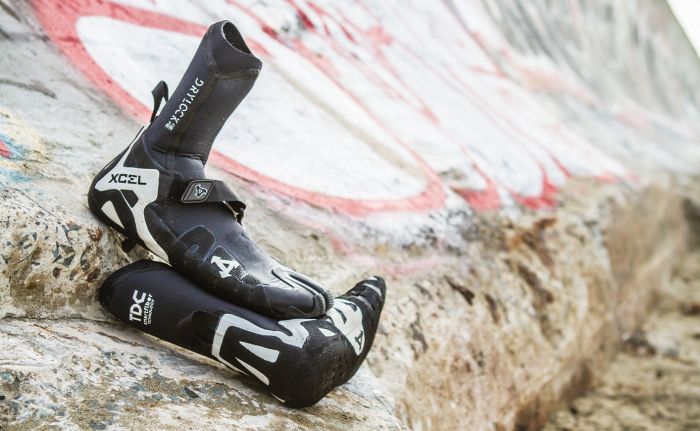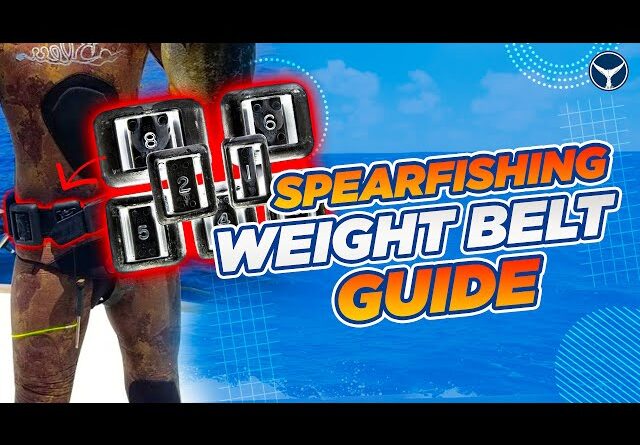
Whether you’re a seasoned windsurfer or just starting out, properly caring for and storing your windsurfing board is key to ensuring its longevity and performance on the water. From keeping it clean and dry to protecting it from harsh elements, this article will provide you with essential tips and tricks to maintain and store your beloved board in top-notch condition. So, grab your gear and let’s dive into the world of windsurfing board care and storage!
1. Cleaning Your Windsurfing Board
When it comes to caring for your windsurfing board, cleaning is an essential step. Regular cleaning helps maintain the performance and longevity of your board. Here are some steps to follow when cleaning your windsurfing board:
1.1 Removing Dirt and Debris
Before you begin cleaning your board, it’s important to remove any dirt and debris that may have accumulated on its surface. Start by using a soft brush or cloth to gently scrub away any loose dirt or sand. Be thorough in your cleaning, paying attention to hard-to-reach areas and crevices.
1.2 Using Mild Soap and Water
Once you’ve removed the dirt and debris, it’s time to clean your board with mild soap and water. Fill a bucket with warm water and add a small amount of mild soap. Dip your brush or cloth into the soapy water and gently scrub the surface of the board. Avoid using any abrasive cleaners or harsh chemicals, as they can damage the finish of your board.
1.3 Avoiding Harsh Chemicals
It’s important to note that using harsh chemicals can be detrimental to the integrity of your board. Substances like bleach, solvents, or abrasive cleaners can strip away protective coatings or damage the materials of your board. Stick to mild soap and water for regular cleaning, and always read the manufacturer’s guidelines for any specific cleaning recommendations.
1.4 Rinsing Thoroughly
After cleaning your board, make sure to rinse it thoroughly with clean water to remove any residue. This will help to prevent any potential damage caused by the soap or cleaning agents. Use a hose or a clean bucket of water to rinse off the soap, ensuring that all traces of the cleaning solution are removed.
2. Drying Your Windsurfing Board
Properly drying your windsurfing board after cleaning is crucial to prevent water damage and ensure its longevity. Here are some ways to effectively dry your board:
2.1 Air Drying
One of the simplest and most effective ways to dry your windsurfing board is by allowing it to air dry. Find a well-ventilated area, preferably outdoors, with good air circulation. Place your board on a rack or a soft surface, ensuring that both sides are exposed to the air. Allow it to dry naturally, preferably in a shaded area to avoid direct sunlight.
2.2 Towel Drying
If you’re short on time or need to dry your board quickly, you can also use a clean towel to remove excess water. Gently pat down the surface of the board, making sure to absorb as much moisture as possible. Be gentle while towel drying to avoid scratching or damaging the board’s surface.
2.3 Preventing Water Stagnation
To aid in the drying process and prevent water stagnation, it’s important to ensure that your board is properly stored after each use. Avoid leaving your board lying flat on the ground or in a damp environment. Instead, prop it up on a rack or use a board bag to keep it elevated and allow air to circulate around it.
2.4 Avoiding Direct Sunlight
While it’s essential to dry your board thoroughly, it’s equally important to avoid exposing it to prolonged direct sunlight. UV rays can cause damage to the materials and colors of your board over time. If you need to dry your board outdoors, choose a shaded area or cover it with a towel or cloth to protect it from excessive sunlight.

This image is property of boardsportscalifornia.com.
3. Protecting the Board Surface
Keeping the surface of your windsurfing board in good condition is essential for optimal performance. Here are some protective measures you can take:
3.1 Waxing the Surface
Waxing the surface of your board is an important step in protecting it from scratches, improving grip, and ensuring better overall performance on the water. Use a high-quality windsurfing board wax and apply it according to the manufacturer’s instructions. Waxing your board should be done periodically, especially if you notice signs of wear or decreased traction.
3.2 Applying UV Protection
UV rays can cause damage to the surface of your board, leading to fading or discoloration. To protect your board from the harmful effects of the sun, apply a quality UV protection product specifically designed for windsurfing boards. Follow the instructions provided by the manufacturer to ensure proper application and reapply as needed.
3.3 Using Board Bags
Transporting your board can expose it to potential scratches or damage. Using a board bag provides an extra layer of protection during transportation and storage. Choose a bag that fits your board’s dimensions and offers padding or cushioning to guard against impacts. When using a board bag, make sure to clean and dry your board before storing it to prevent moisture buildup.
3.4 Avoiding Scratching
Preventing scratches on the surface of your board is essential for maintaining its appearance and performance. Avoid dragging your board on rough surfaces, rocks, or concrete. When carrying your board, use proper lifting techniques (covered in section 4.1) to avoid unnecessary contact with abrasive surfaces. Additionally, be mindful of sharp objects or accessories that could come into contact with the board and potentially cause scratching.
4. Handling and Transporting
Proper handling and transportation of your windsurfing board are crucial to prevent damage while on the move. Follow these tips to ensure the safety and longevity of your board:
4.1 Correct Lifting Techniques
When lifting your windsurfing board, it’s important to use proper lifting techniques to avoid unnecessary strain and potential damage. Bend your knees and lift with your legs, keeping your back straight. Use both hands to secure the board, one near the mast base and the other near the tail. Avoid putting excessive pressure on the fins or other vulnerable parts of the board.
4.2 Proper Storage of Fins
Fins are an essential component of your windsurfing board, and they need to be properly stored to prevent damage. When removing the fins for transport or storage, ensure they are kept in a safe place. Consider using a padded fin bag to prevent scratching or bending of the fins. Avoid placing heavy objects on top of the fins, as this can lead to distortion or breakage.
4.3 Securing Board on Roof Racks
If you need to transport your windsurfing board using roof racks, it’s important to do so safely and securely. Use proper board straps or rack pads specifically designed for windsurfing boards. Position the board on the roof racks, ensuring that it is centered and balanced. Use the straps to secure the board tightly, making sure it is not loose or sliding during transportation.
4.4 Avoiding Extreme Temperatures
Extreme temperatures, whether hot or cold, can have adverse effects on your windsurfing board. Avoid leaving your board in direct sunlight for extended periods, as this can cause warping or delamination. Similarly, avoid exposing your board to extreme cold, as freezing temperatures can lead to cracking or damage. Store your board in temperature-controlled environments whenever possible, especially during periods of extreme weather.

This image is property of porch.com.
5. Maintenance and Repairs
Regular maintenance and addressing minor repairs promptly can help prolong the life of your windsurfing board. Here are some steps to consider:
5.1 Regular Board Inspections
Make it a habit to regularly inspect your windsurfing board for any signs of wear, damage, or potential issues. Examine the surface for scratches, dings, or delamination. Check the fins, foot straps, and other components for loose or damaged parts. By catching any problems early on, you can prevent further damage and costly repairs.
5.2 Repairing Minor Dings
Minor dings or cracks on your board can be repaired using appropriate repair kits. These kits usually include epoxy resin, hardener, and fiberglass cloth. Follow the instructions provided by the manufacturer to effectively fill and seal any dings or cracks. Take your time and ensure a thorough repair to prevent water penetration or further damage.
5.3 Professional Repairs
For major repairs or more complex issues, it’s best to consult a professional windsurfing repair service. They have the expertise and specialized tools to handle extensive repairs, such as delamination or fin replacements. Seeking professional help ensures that the repairs are carried out accurately, minimizing the risk of further damage to your board.
5.4 Replacing Damaged Parts
Certain components of your windsurfing board may require periodic replacement due to wear and tear. This includes foot straps, mast bases, booms, or harness lines. Check these parts regularly and replace them as needed to maintain optimal performance and safety. Ensure that any replacement parts are compatible with your specific board model and follow the manufacturer’s guidelines for installation.
6. Storing Your Windsurfing Board
Proper storage of your windsurfing board is crucial to prevent damage and ensure its longevity. Follow these guidelines for effective board storage:
6.1 Choosing the Right Storage Location
When choosing a storage location for your windsurfing board, consider factors such as temperature, humidity, and accessibility. Ideally, the storage area should be well-ventilated, dry, and free from extreme temperature fluctuations. Avoid storing your board in areas prone to high humidity or direct sunlight, as these conditions can accelerate deterioration.
6.2 Proper Board Positioning
To prevent unnecessary stress on your board, store it in a horizontal position, preferably on a soft surface or rack. Avoid storing the board upright without proper support, as this can lead to warping or damage. If space is limited, you can stack multiple boards horizontally, ensuring that each board is adequately supported to avoid excessive pressure on the fins or other sensitive areas.
6.3 Storage Racks and Hooks
Investing in a storage rack or hooks specifically designed for windsurfing boards can help maximize space and provide secure storage. These racks or hooks can be easily mounted on walls or in storage sheds, allowing you to keep your board off the ground and organized. Ensure that the racks or hooks are sturdy and capable of supporting the weight of your board.
6.4 Covering the Board
Using a protective cover or board bag when storing your windsurfing board adds an extra layer of protection against dust, moisture, and UV rays. Choose a cover that fits your board’s dimensions and offers adequate padding. Before covering the board, ensure that it is clean and dry to prevent moisture buildup and potential damage.

This image is property of boardsportscalifornia.com.
7. Winter Storage
If you live in an area with cold winter months or extended periods of inactivity for your windsurfing board, proper winter storage is essential to maintain its condition. Here are some tips for winter storage:
7.1 Cleaning and Drying
Before storing your board for the winter, make sure to thoroughly clean and dry it. Follow the cleaning and drying steps mentioned earlier to remove any dirt, salt, or debris from the surface. This will help prevent corrosion or damage during the storage period.
7.2 Removing Fins and Straps
To prevent potential damage to fins or straps during winter storage, it’s recommended to remove them from your windsurfing board. Store the fins in a separate padded bag or container to ensure they remain safe and undamaged. Remove foot straps, harness lines, or any other removable components and store them separately as well.
7.3 Correct Temperature and Humidity
When storing your board during winter, it’s important to choose a storage location with the right temperature and humidity levels. Extreme cold or high humidity can cause materials to deteriorate or warp. Aim for a temperature-controlled area that maintains a stable and moderate climate throughout the winter months.
7.4 Monitoring Board Condition
Periodically check on your stored board during the winter months to ensure it remains in good condition. Look for any signs of moisture buildup or damage. If necessary, reposition the board to allow for proper air circulation and prevent potential issues caused by prolonged storage.
8. Transporting Your Windsurfing Board
Whether you’re going to a local windsurfing spot or embarking on a vacation, proper transportation of your board is crucial to prevent damage. Follow these tips for a safe and hassle-free transport:
8.1 Equipment Preparation
Before transporting your windsurfing board, ensure that it is properly prepared. Remove any loose items, such as foot straps or harness lines, and store them securely. It’s also advisable to clean and dry the board to prevent dirt, salt, or water residue from causing damage during the journey.
8.2 Board Protection
To protect your board during transportation, consider using a padded board bag or cover. Double-check that the bag or cover fits your board properly and offers sufficient padding. This will help guard against scratches, impacts, and other potential damage caused by rough handling, vibrations, or shifting in the vehicle.
8.3 Secure Strapping
When securing your windsurfing board for transport, use high-quality straps or tie-downs specifically designed for this purpose. Position the board on your vehicle’s roof racks or in the appropriate storage area, ensuring it is centered and balanced. Tighten the straps securely, making sure the board is stable and not at risk of shifting during transit.
8.4 Safety Measures
Take necessary precautions to ensure the safety of your board during transportation. Observe speed limits and avoid sudden braking or acceleration that could cause the board to jolt or slide. If possible, choose routes with smooth roads to minimize vibrations and bumps. Regularly check the straps or tie-downs during the journey to ensure they remain tight and secure.

This image is property of boardsportscalifornia.com.
9. Board Bag Maintenance
Board bags not only protect your windsurfing board during transportation but also require maintenance to prolong their lifespan. Here’s how to properly care for your board bag:
9.1 Regular Cleaning
To keep your board bag in optimal condition, regularly clean it to remove any dirt, salt, or debris. Use mild soap and water, or a specific board bag cleaner if available. Gently scrub the exterior and interior of the bag, paying attention to any stains or soiling. Rinse thoroughly and allow the bag to dry completely before storing or using it again.
9.2 Storage Considerations
When not in use, store your board bag in a clean and dry area. Avoid exposing it to direct sunlight or extreme temperatures, as these can accelerate wear and tear. Ensure that the bag is completely dry before storing to prevent moisture buildup or mold growth. Folding the bag neatly and avoiding excessive pressure or crushing will help maintain its shape over time.
9.3 Repairing Damages
If your board bag experiences any damage, such as tears, broken zippers, or seam separations, it’s important to address these issues promptly. Many bags come with repair kits that include adhesive patches or replacement components. Follow the instructions provided by the manufacturer to carry out the necessary repairs. If the damage is extensive, consider getting professional assistance or replacing the bag if necessary.
9.4 Upgrading Bag Quality
Investing in a high-quality board bag is a wise decision to ensure better protection and durability. Consider upgrading to a bag that offers additional features such as reinforced padding, multiple compartments, or wheels for easy transportation. Choose a bag that fits your specific board size and shape to ensure a snug and secure fit. Spending a little more on a quality bag will pay off in the long run with enhanced board protection.
10. Long-Term Storage
If you anticipate an extended period of inactivity for your windsurfing board, such as during the off-season, proper long-term storage is crucial. Here’s what you need to consider:
10.1 Preparing the Board
Before storing your board for an extended period, it’s important to prepare it properly. Thoroughly clean and dry the board to remove any dirt, salt, or debris. Apply a protective coating such as wax or UV protection to preserve the board’s condition during storage. Remove fins, foot straps, or any other removable parts, and store them separately.
10.2 Storage Environment
Choose a storage environment that is suitable for long-term storage of your windsurfing board. The area should be clean, dry, and free from extreme temperature fluctuations. Aim for a moderate temperature and humidity level to prevent damage or deterioration. If possible, avoid storing your board directly on the ground, as this can expose it to moisture and potential pests.
10.3 Board Rotation
To prevent long-term warping or distortion, consider periodically rotating the position of your stored board. This helps distribute any potential pressure or weight unevenness, ensuring that the board remains in good shape. If you have multiple boards, rotate them periodically to help maintain their structural integrity over time.
10.4 Regular Check-ups
During the long-term storage period, it’s important to regularly check on your windsurfing board. Inspect for any signs of moisture buildup, mold, or other damage. Ensure that the storage area remains clean and dry, and address any potential issues promptly. By regularly monitoring your stored board, you can prevent or mitigate any damage that may occur.
Properly caring for and storing your windsurfing board is essential to maintain its performance and extend its lifespan. By following these tips and guidelines, you can ensure that your board stays in top condition, ready for your next thrilling windsurfing adventure.

This image is property of porch.com.






